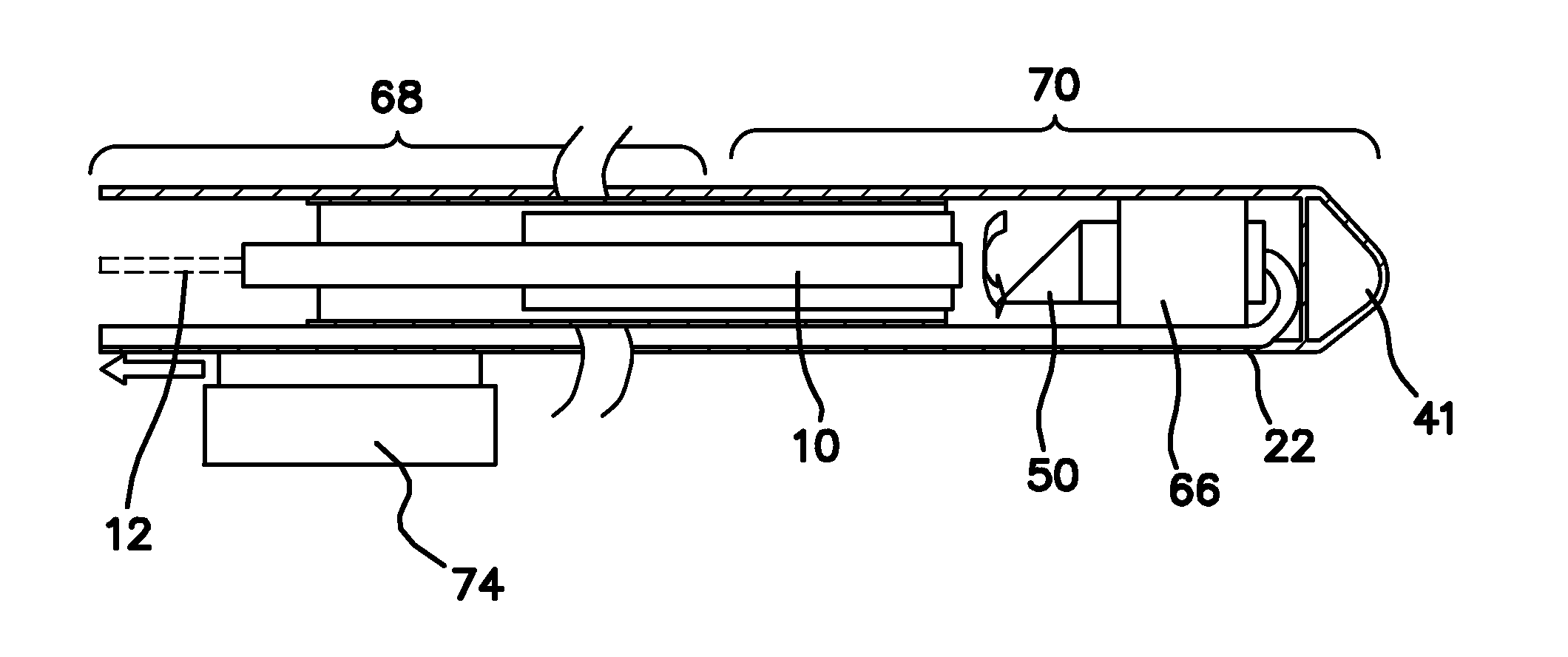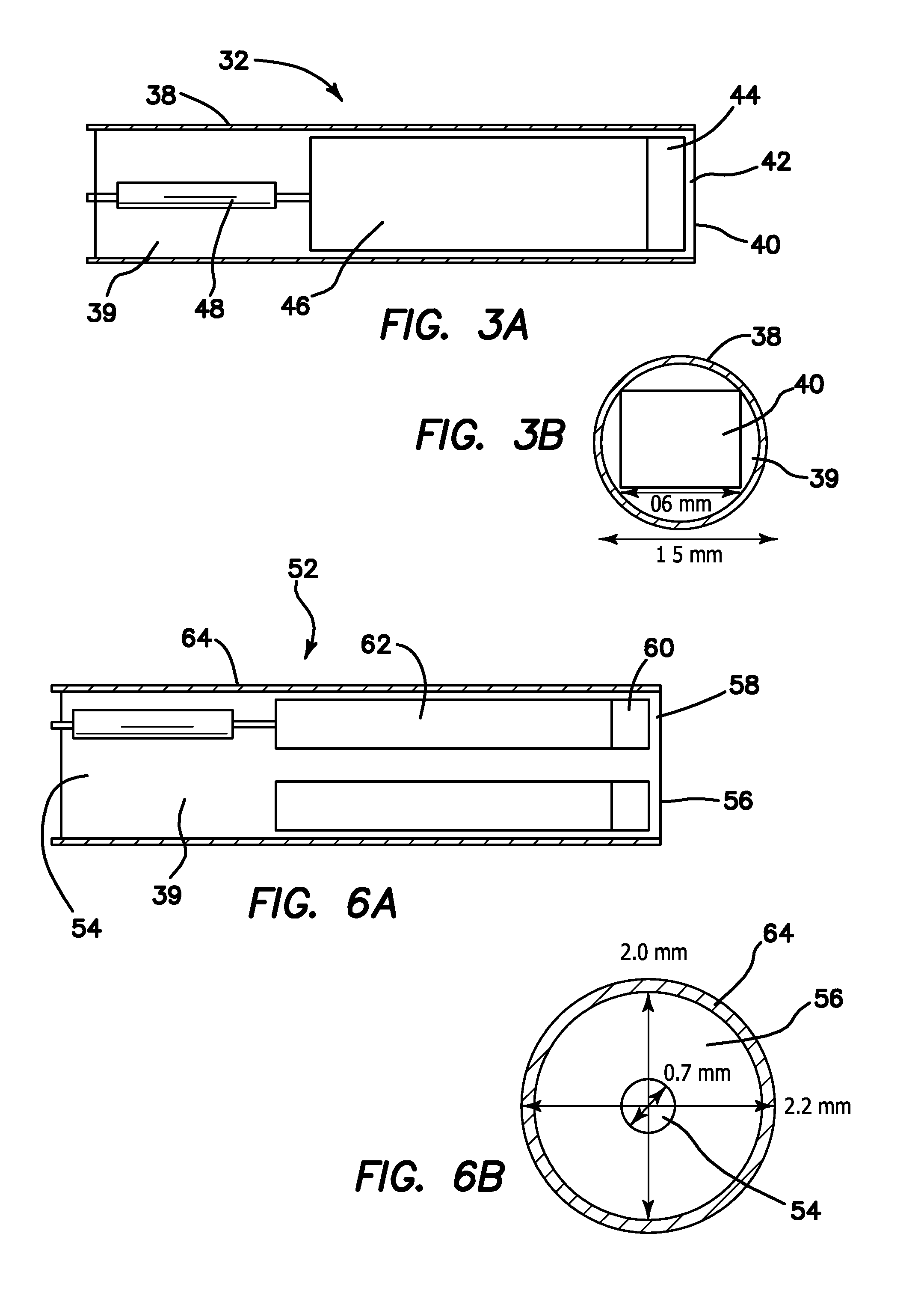Ultrasound guided optical coherence tomography, photoacoustic probe for biomedical imaging
a biomedical imaging and optical coherence tomography technology, applied in the field of intravascular imaging, can solve the problems of poor blood vessel imaging performance of conventional ultrasound imaging, medical safety concerns, and the fabrication of miniaturized ultrasound probes, and achieve the effects of high resolution, high resolution, and safe way to obtain intravascular oct images
- Summary
- Abstract
- Description
- Claims
- Application Information
AI Technical Summary
Benefits of technology
Problems solved by technology
Method used
Image
Examples
Embodiment Construction
[0077]An optical coherence tomography (OCT) probe is shown in the side plan view of FIG. 1 and is generally represented by reference numeral 10. A single mode optical fiber 12 is used to transmit light from a light source to biomedical sample or target (both not shown). Any type of light source used or usable in optical coherence tomography may be employed. The single mode fiber 12 is protected by a steel tube 14, which helps increase the stiffness of the proximal portion of the fiber 12 that is near an adaptor 16 where mechanical rotation is introduced. A flexible coil wire 18 is disposed through and beyond the distal end of the steel tube 14 to give flexibility to the distal tip of the probe 10 contained within a polyimide tube 22. Light from the distal tip of the single mode fiber 12, which may be an angle polished fiber, is focused by a gradient-index (GRIN) lens 20 into a focusing point in or on the target tissue as seen in FIGS. 1a and 1b. FIG. 1a is a side cross-sectional vie...
PUM
 Login to View More
Login to View More Abstract
Description
Claims
Application Information
 Login to View More
Login to View More - R&D
- Intellectual Property
- Life Sciences
- Materials
- Tech Scout
- Unparalleled Data Quality
- Higher Quality Content
- 60% Fewer Hallucinations
Browse by: Latest US Patents, China's latest patents, Technical Efficacy Thesaurus, Application Domain, Technology Topic, Popular Technical Reports.
© 2025 PatSnap. All rights reserved.Legal|Privacy policy|Modern Slavery Act Transparency Statement|Sitemap|About US| Contact US: help@patsnap.com



